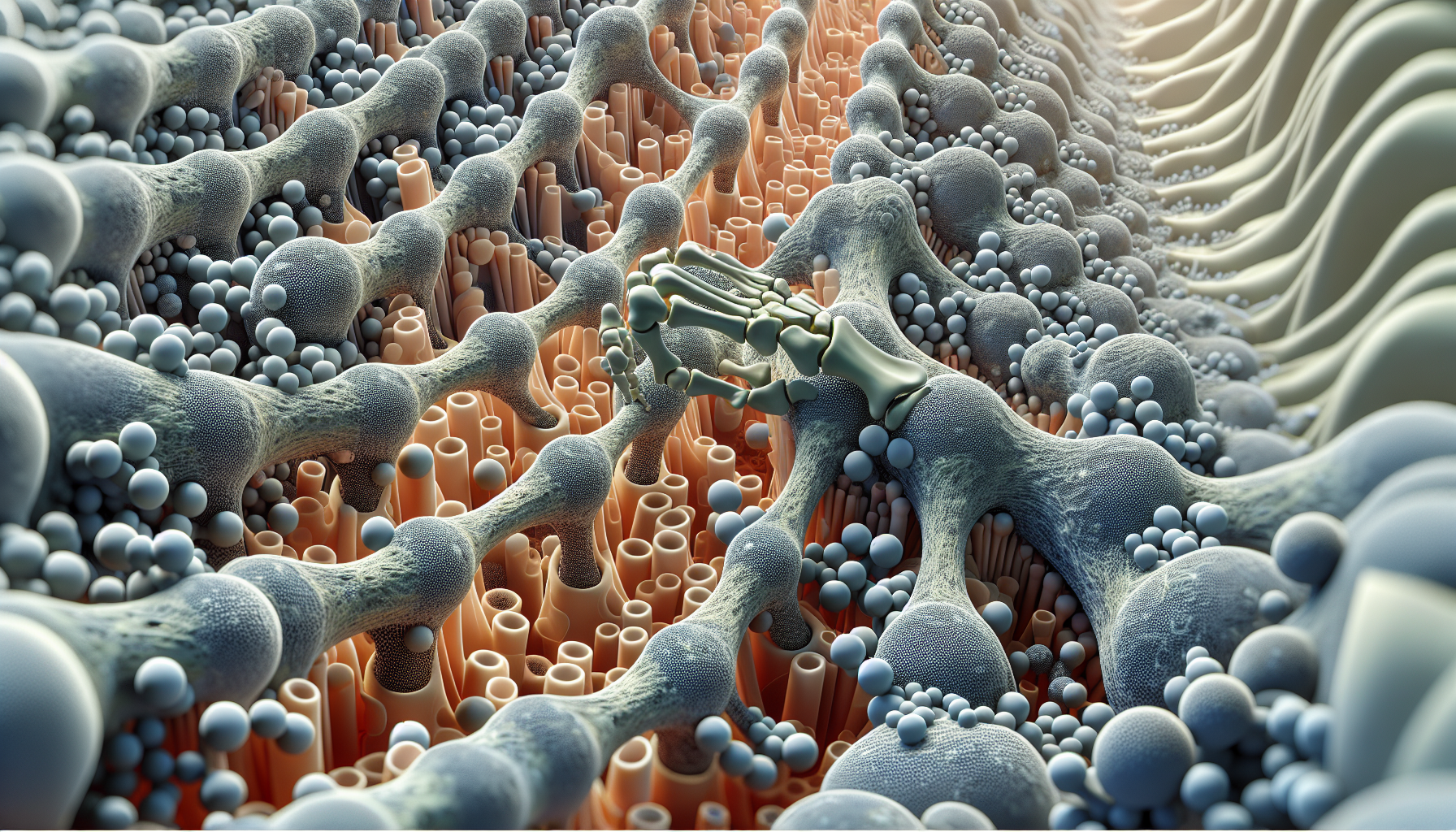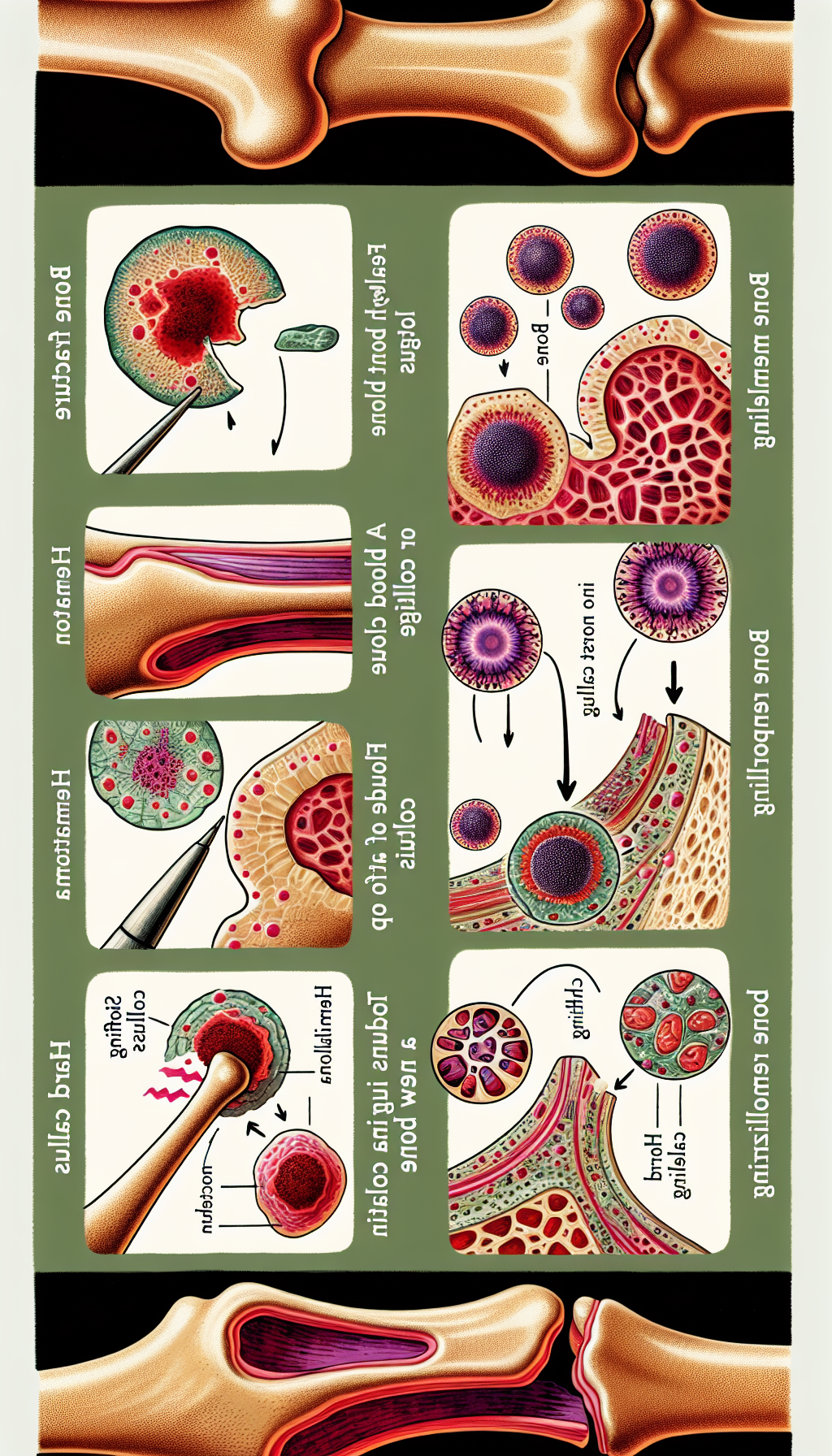Calcium is a fundamental mineral in the human body, playing a crucial role in various physiological processes. Among these, the most significant is its contribution to bone health, particularly in the context of healing after a fracture. As the body works to repair and rebuild the damaged bone, calcium serves as a cornerstone for new bone formation and the restoration of skeletal integrity.
Understanding the intricate process of bone healing can empower individuals to make informed decisions regarding their diet, lifestyle, and healthcare following a fracture. This article will elaborate on the role of calcium during the different stages of bone healing and offer insights on optimizing calcium intake for improved outcomes.
Stages of Bone Healing
Bone healing occurs in three primary stages: the inflammatory phase, the reparative phase, and the remodeling phase. Each stage is characterized by unique biological processes that contribute to the overall recovery of the bone.
Inflammatory Phase
The inflammatory phase is the initial response to bone injury. During this period, the body forms a blood clot, known as a hematoma, at the fracture site, which lays the groundwork for new tissue development.
Reparative Phase
Following the inflammation, the reparative phase commences. It involves the formation of a soft callus made up of collagen and cartilage, which eventually converts into a hard callus as calcium and other minerals are deposited.
Remodeling Phase
Finally, the remodeling phase reshapes the hard callus into mature bone tissue. Throughout this stage, calcium continues to be vital as it helps in the gradual transformation of the bone structure to its original form and strength.
The Critical Role of Calcium in Bone Repair
Calcium’s importance in bone repair cannot be overstated. It is the key mineral that gives bone its strength and rigidity. During the reparative and remodeling phases of bone healing, the body increases the localized concentration of calcium to facilitate the mineralization of the new bone matrix.
For a deeper understanding of bone health and the role of calcium, the article Understanding the Link Between Bone Health and Electrolyte Balance provides valuable insights.
Optimizing Calcium Intake for Bone Healing
Adequate calcium intake is crucial for optimal bone healing. The recommended daily allowance (RDA) for calcium varies by age, gender, and life stage, but it generally ranges from 1,000 to 1,200 milligrams per day for most adults. Post-fracture, consulting with a healthcare provider can help tailor calcium intake to individual needs.
Dietary Sources of Calcium
Dairy products are well-known sources of calcium, but for those with dietary restrictions or preferences, there are ample non-dairy sources. Leafy green vegetables, almonds, and fortified plant-based milks are excellent alternatives.
For individuals following a plant-based diet, the article Vegan Sources of Calcium and Vitamin D for Bone Health offers a comprehensive guide to non-animal sources of calcium.
Calcium Supplements
When dietary sources are insufficient, calcium supplements can help meet the required intake. It’s essential to choose high-quality supplements and to be aware of the proper dosing and potential interactions with other medications.
More information on supplements can be found at Medication & Supplements.
Supporting Nutrients for Calcium Absorption and Bone Health
Calcium does not act alone in the process of bone healing. Other nutrients play supportive roles in enhancing calcium absorption and promoting bone health.
Vitamin D
Vitamin D is paramount for calcium absorption. Without sufficient vitamin D, the body cannot effectively absorb calcium, regardless of intake levels.
Magnesium and Vitamin K
Magnesium and vitamin K are also involved in bone health. Magnesium aids in the conversion of vitamin D into its active form, which is necessary for calcium absorption, while vitamin K supports the binding of calcium to the bone matrix.
Protein
Protein is a component of bone tissue and is necessary for the repair and growth of bone during the healing process.
For an in-depth discussion on the relationship between bone health and nutrients, the article The Role of Vitamin E in Bone Density and Strength provides an excellent resource.
External Resources Supporting Bone Healing
To support the points made regarding the importance of calcium and other nutrients in bone health, here are several niche and specific resources:
- The National Institutes of Health offers an Osteoporosis and Related Bone Diseases National Resource Center, which provides detailed information on bone health and calcium.
- The International Osteoporosis Foundation has resources on Nutrition and Bone Health, with specific information on the role of calcium and vitamin D in bone health.
- For those interested in the biochemistry of bone repair, the American Society for Bone and Mineral Research presents research and educational materials on the molecular mechanisms involved in bone turnover and healing.
Lifestyle Considerations for Enhancing Bone Healing
In addition to optimizing calcium intake, certain lifestyle factors can influence the rate and quality of bone healing.
Physical Activity
Engaging in weight-bearing and resistance exercises can stimulate bone growth and strength, which is beneficial for the healing process. However, it’s important to approach exercise with caution post-fracture and to follow medical advice to avoid further injury.
For strategies on improving bone strength, consider reading Strategies for Improving Bone Strength in Young Adults.
Smoking and Alcohol Consumption
Smoking and excessive alcohol intake can impair bone healing by affecting the blood supply to the bones and interfering with the body’s calcium balance.
Stress Management
Chronic stress can lead to hormonal imbalances that negatively impact bone health. Effective stress management techniques can therefore indirectly support bone healing.
Conclusion
Calcium plays a pivotal role in post-fracture bone healing, acting as a critical building block during the repair and remodeling stages. Ensuring adequate calcium intake through diet or supplements, along with supporting nutrients like vitamin D, magnesium, and vitamin K, is essential for optimal healing. Coupled with a healthy lifestyle that includes physical activity, stress management, and avoidance of smoking and alcohol, individuals can significantly support their bone healing journey and overall bone health.
By acknowledging the multifaceted nature of bone healing and the integral role of calcium, individuals can take proactive steps to enhance their recovery after a fracture and maintain strong, healthy bones throughout their lives.



